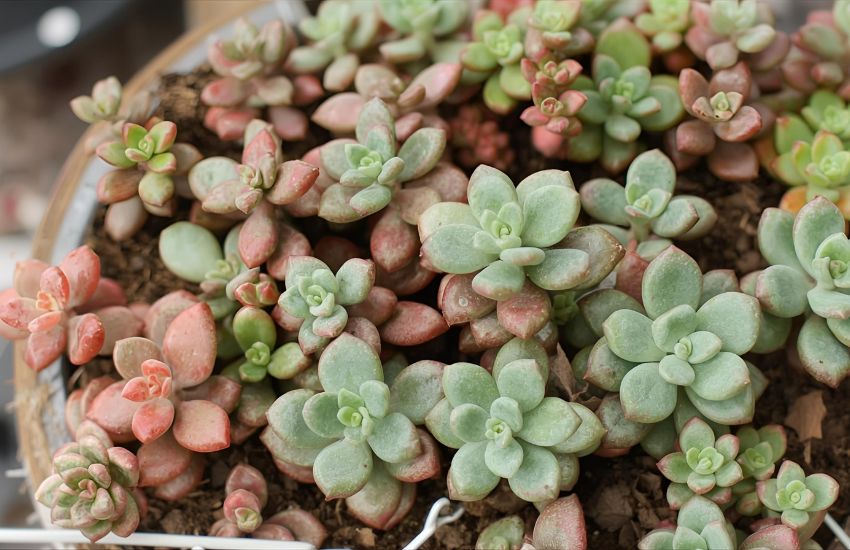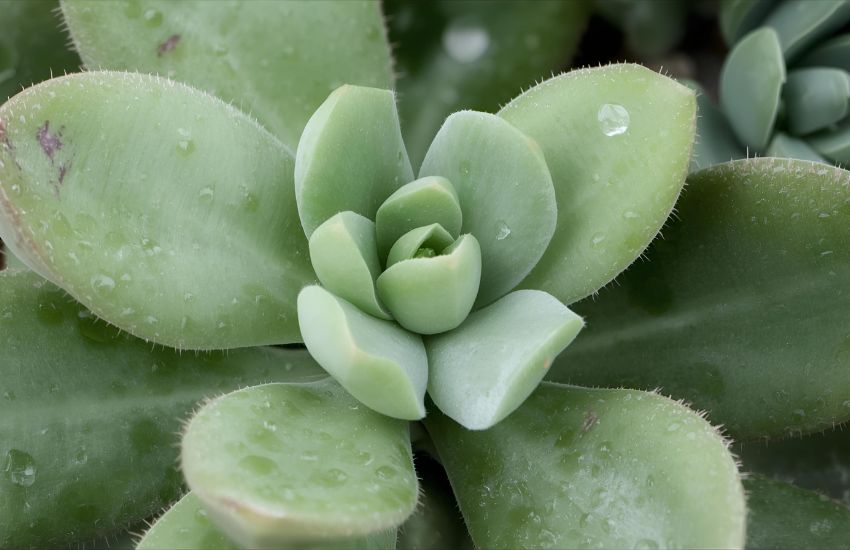A jade plant has long been admired as more than just a decorative piece—it symbolizes prosperity and resilience, making it a favorite for both beginners and seasoned indoor gardeners. Known botanically as crassula ovata, this hardy succulent is cherished for its glossy green leaves, woody stem, and ability to adapt easily to modern living spaces. With proper care, it can grow into a miniature shrub and even surprise you with clusters of delicate white flowers.
Crassula Ovata, commonly known as the Jade Plant, thrives indoors with minimal care. Place it in bright indirect sunlight, water moderately, and allow the soil to dry between watering to prevent root rot. Use well-draining soil and avoid overwatering. Prune regularly to shape growth, and your Jade Plant will reward you with healthy, vibrant foliage.
In this guide, you will learn practical methods for maintaining a thriving jade plant indoors, from selecting the right pot and managing humidity to techniques for pruning, shaping, and successful propagation. You will also discover how to keep this evergreen houseplant healthy, ensuring strong stems and vibrant foliage for years to come.
How to Care for a Jade Plant as a Houseplant Indoors

When you care for a jade plant indoors, you give yourself the chance to enjoy one of the most rewarding and symbolic houseplants. This remarkable cultivar of the Crassulaceae family is often referred to as the money tree, admired for its thick trunk, woody branches, and lush foliage.
Its fleshy leaves not only store water but may also become tinged with red along the edges when exposed to bright conditions, adding a charming tint to its natural beauty. With time, healthy plants can form a cluster of stems that eventually produce small white blooms under the right conditions.
To maintain strong growth indoors, place your jade plant in a location with plenty of bright light but away from harsh direct sun, which can scorch its surface. Instead, an area with bright indirect light works best. Use a well-drained potting soil to avoid issues like overwatering, which is the most common cause of root problems.
During spring and summer, you may apply a balanced fertilizer in moderation to support new growth. Regularly prune back leggy branches to shape the plant, encourage branching, and even train it into a miniature bonsai style if you wish.
Though jade plants can tolerate a touch of light frost, they thrive best at stable indoor temperature and humidity levels. As they are easy to propagate, you can expand your collection by planting cuttings and watching them root into new pots. With consistent attention and the right environment, your jade plant will remain a resilient and elegant part of your indoor garden for many years.
Best Ways to Propagate Crassula Ovata Succulent Successfully at Home

Propagating jade plants, commonly known as the lucky plant, is one of the most rewarding experiences you can enjoy as a houseplant enthusiast. This succulent is not only easy to grow but also highly adaptable, making it an excellent choice for beginners and seasoned growers alike. Whether you want to expand your collection or share cuttings with friends, learning the best propagation methods ensures that your jade plant thrives for years to come.
Propagation through Leaf Cuttings
One of the simplest techniques involves using healthy leaves. Select leaves that measure about 1 to 3½ inches long and place them in a well-draining soil mix after allowing the cut surface to callus over for a day or two. Over time, roots will develop, and small shoots will begin to appear. These new growths tend to be clustered at the ends of stems, giving the plant a compact and attractive look. Patience is key here, as this method may take several weeks before visible progress occurs.
Stem Cutting Propagation
If your plant becomes top-heavy, stem cuttings are the most reliable way to bring balance while multiplying your jade. Cut a healthy stem segment with several leaves, allow it to dry slightly, and then plant it in a sandy or succulent-friendly mix. As it grows, you will notice new branches that are often clustered at the ends, creating a fuller appearance. Varieties like Hummel’s Sunset, known for its vibrant golden tones, or Crosby’s Compact, with its smaller leaves, respond especially well to this method.
Flower-Based Propagation
Though less common, propagation from flowers can occur if your jade blooms. The blossoms, usually clusters of small white or pink star-shaped flowers, tend to be clustered at the ends of mature stems. While this method is slower and not widely practiced, it highlights the natural beauty of the jade plant when given the right conditions, such as several hours of direct sun each day.
Caring for New Propagations
Once your cuttings are planted, they need to be acclimated gradually to sunlight. Moving them too quickly into intense light can cause stress, so increase sun exposure in small steps. Consistent care is important during this stage, as young plants are more sensitive to pests. Mealybug infestations are a common issue, and spider mites can also cause damage if left unchecked. Regular inspection and gentle cleaning of leaves help protect your propagations.
By mastering these techniques, you ensure that your jade cuttings flourish into strong, independent plants. With a little care, each propagation has the potential to become a striking specimen, adding beauty and life to your indoor collection.
Top Jade Plant Cultivar Types to Grow as Indoor Houseplants

Jade plants, Crassula ovata, are beloved succulents native to South Africa, particularly the regions of KwaZulu-Natal and the Eastern Cape. Their resilience and ornamental beauty make them excellent indoor companions when given the right care. As you explore different cultivars, you will notice that each offers unique foliage, growth habits, and even seasonal flowers in winter. With proper attention—such as choosing a well-draining potting mix, knowing when to allow the soil to dry between waterings, and preventing sunburn from excessive light—you can enjoy these stunning varieties for many years.
Classic Jade (Crassula ovata)
The classic jade plant resembles a small tree over time, with woody stems and egg-shaped, obovate leaves that shine in a deep green hue. These leaves typically grow 3½ inches long and ¾ to 1½ inches wide, forming lush clusters. When mature, this cultivar may produce small white flowers that are star-shaped, bringing delicate beauty to your indoor setting during its flowering season.
‘Gollum’ Jade
The Gollum variety is one of the most recognizable and popular jade cultivars. Its tubular leaves and stems resemble tiny green fingers with reddish tips, giving it a distinctive, sculptural appeal. Like other jades, it thrives during its active growth period in spring and summer, needing careful waterings where you allow the soil to dry before replenishing moisture. This cultivar is highly tolerant but benefits from gradual acclimation to bright light to avoid the risk of sunburn.
‘Hummel’s Sunset’
A striking cultivar, Hummel’s Sunset is admired for its golden-yellow leaves accented with red edges. Under strong light, the colors intensify, making it a perfect focal point in your collection. It performs best in a succulent-friendly potting mix and requires balanced care—consistent but not excessive watering—to maintain its vibrant tones. During winter, it may reward you with clusters of small white flowers, adding seasonal charm.
‘Crosby’s Compact’
For smaller spaces, Crosby’s Compact is an excellent choice. This dwarf cultivar features shorter stems with leaves that are long and ¾ to 1½ inches wide, creating a denser and more compact shape than the classic jade. Its manageable size makes it ideal for tabletops or window sills, while its hardiness ensures it remains easy to maintain indoors.
Why Cultivar Choice Matters
Selecting the right jade cultivar enhances both the aesthetic and practical aspects of indoor gardening. While some, like the classic jade, resemble a small tree with large leaves, others such as ‘Gollum’ or ‘Crosby’s Compact’ offer unique forms and proportions. All cultivars thrive with the same foundational care: a well-draining potting mix, moderate waterings, protection from excessive light, and patience during the slower winter months when flowering may occur.
By choosing from these captivating jade plant types, you enrich your indoor collection with diverse textures, colors, and seasonal beauty. With thoughtful care, each cultivar will thrive and reward you with lasting greenery and blooms.
Conclusion
The jade plant remains a truly popular houseplant, admired for its resilience, sculptural form, and the charm of its deep green leaves. Native to regions such as the Eastern Cape, this succulent has fascinated enthusiasts and students of botany for generations. Its shrubby growth habit, sturdy main trunk, and glossy leaves and stems make it both versatile and long-lived when cared for properly.
As you nurture your jade, remember that it can reward you with clusters of small white flowers that add delicate beauty to your indoor space. Cultivars such as ‘Hobbit’ often display unique foliage with a reddish tint, while others produce more classic egg-shaped leaves. To keep your jade thriving, ensure it receives enough light—preferably bright indirect light—since poor light intensity may cause plants to become leggy or drop lower leaves.
Proper care also means protecting your jade from challenges. Avoid overwatering to reduce the risk of root rot, especially when the plant is root-bound in its pot. Using a well-draining mix with perlite ensures healthier soil conditions. While jade plants are hardy, pests may still infest weakened growth, so regular inspection is wise. Additionally, avoid exposing them to freezing conditions, as this can cause severe damage. During spring and summer, feed your plant liberally during active growth periods to support vitality and new branching.
With thoughtful care and the right growing conditions, your jade plant will continue to flourish as a stunning and enduring addition to your indoor garden. If you are ready to expand your collection, explore the many cultivars available—from classic varieties to compact forms like ‘Hobbit’—and enjoy the unique beauty they bring. Start growing today and experience the timeless appeal of this exceptional houseplant.
Frequently Asked Questions (Crassula Ovata Plant Care Guide: How to Grow a Thriving Jade Plant Indoors)
How to keep a jade plant alive indoors?
To keep a jade plant alive indoors, place it in bright, indirect sunlight near a south-facing window. Use well-draining soil and water sparingly, allowing the soil to dry between waterings. Avoid overwatering to prevent root rot. Keep room temperatures between 18–24°C and occasionally wipe leaves to remove dust for healthy growth.
How do I make my Crassula ovata thrive?
To make your Crassula ovata (jade plant) thrive, place it in bright, indirect sunlight or a few hours of direct sun. Water sparingly, allowing soil to dry between waterings, and use a well-draining succulent mix. Keep temperatures moderate, avoid overwatering, and prune leggy growth. Occasional feeding with diluted fertilizer boosts healthy growth.
Where is the best place to put a jade plant indoors?
The best place to put a jade plant indoors is near a bright, sunny window, preferably facing south or west, where it can receive at least four to six hours of indirect sunlight daily. Ensure good airflow and avoid drafty areas. Keep it away from heaters or air conditioners to maintain stable temperatures and healthy growth.
How to make a jade plant happy?
To make a jade plant happy, place it in bright, indirect sunlight for at least four hours daily. Use well-draining soil and water only when the topsoil is dry to avoid root rot. Keep it in moderate room temperatures and avoid drafts. Occasionally prune to maintain shape and encourage bushier growth.
